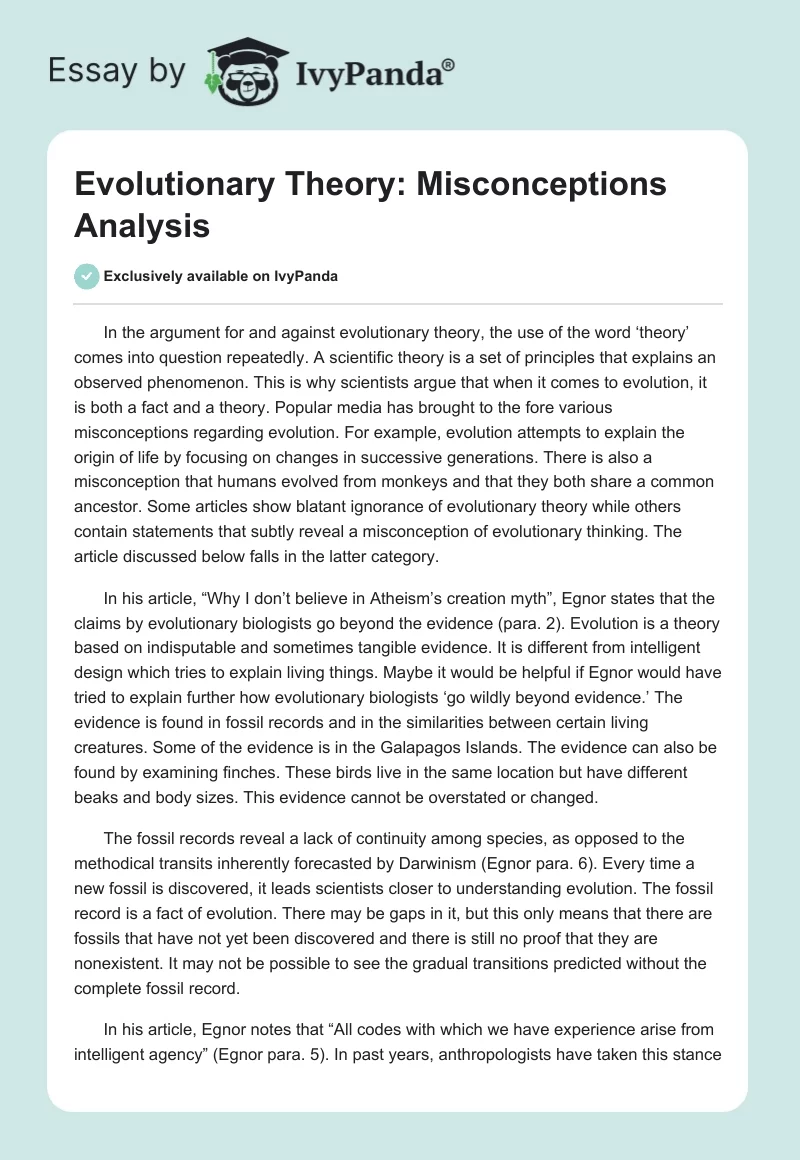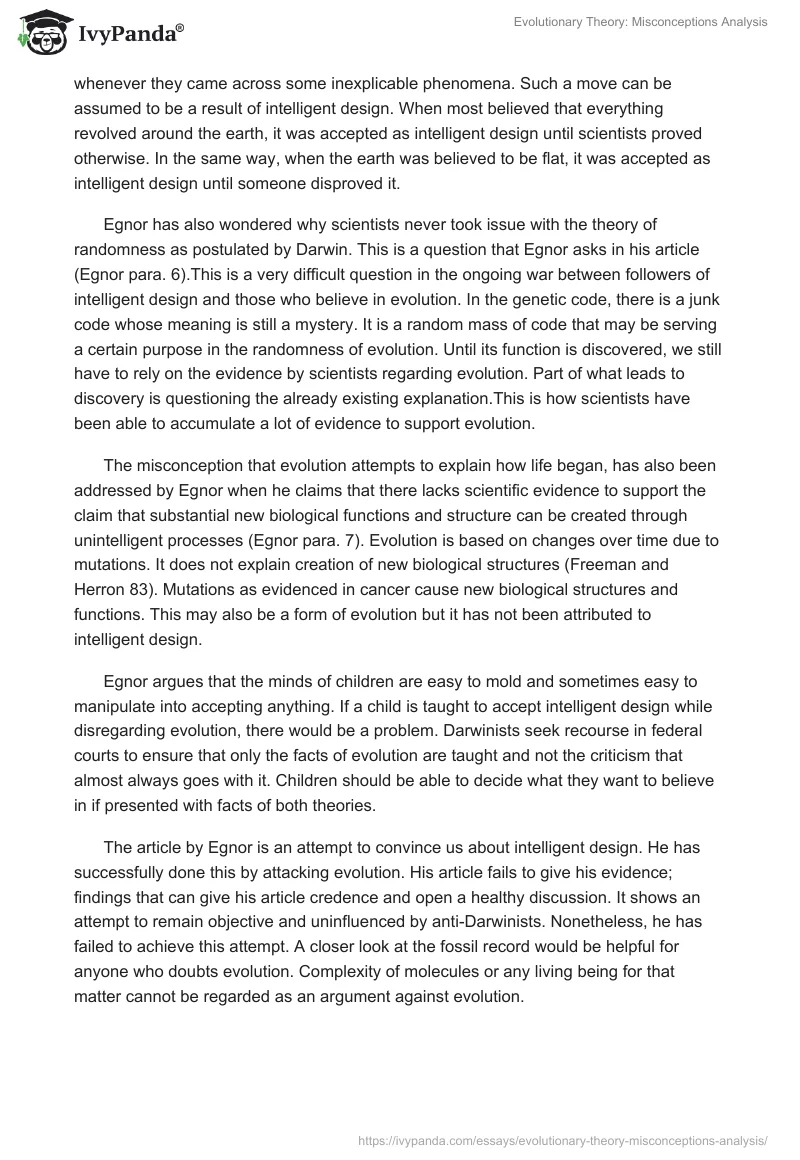In the argument for and against evolutionary theory, the use of the word ‘theory’ comes into question repeatedly. A scientific theory is a set of principles that explains an observed phenomenon. This is why scientists argue that when it comes to evolution, it is both a fact and a theory. Popular media has brought to the fore various misconceptions regarding evolution. For example, evolution attempts to explain the origin of life by focusing on changes in successive generations. There is also a misconception that humans evolved from monkeys and that they both share a common ancestor. Some articles show blatant ignorance of evolutionary theory while others contain statements that subtly reveal a misconception of evolutionary thinking. The article discussed below falls in the latter category.
In his article, “Why I don’t believe in Atheism’s creation myth”, Egnor states that the claims by evolutionary biologists go beyond the evidence (para. 2). Evolution is a theory based on indisputable and sometimes tangible evidence. It is different from intelligent design which tries to explain living things. Maybe it would be helpful if Egnor would have tried to explain further how evolutionary biologists ‘go wildly beyond evidence.’ The evidence is found in fossil records and in the similarities between certain living creatures. Some of the evidence is in the Galapagos Islands. The evidence can also be found by examining finches. These birds live in the same location but have different beaks and body sizes. This evidence cannot be overstated or changed.
The fossil records reveal a lack of continuity among species, as opposed to the methodical transits inherently forecasted by Darwinism (Egnor para. 6). Every time a new fossil is discovered, it leads scientists closer to understanding evolution. The fossil record is a fact of evolution. There may be gaps in it, but this only means that there are fossils that have not yet been discovered and there is still no proof that they are nonexistent. It may not be possible to see the gradual transitions predicted without the complete fossil record.
In his article, Egnor notes that “All codes with which we have experience arise from intelligent agency” (Egnor para. 5). In past years, anthropologists have taken this stance whenever they came across some inexplicable phenomena. Such a move can be assumed to be a result of intelligent design. When most believed that everything revolved around the earth, it was accepted as intelligent design until scientists proved otherwise. In the same way, when the earth was believed to be flat, it was accepted as intelligent design until someone disproved it.
Egnor has also wondered why scientists never took issue with the theory of randomness as postulated by Darwin. This is a question that Egnor asks in his article (Egnor para. 6).This is a very difficult question in the ongoing war between followers of intelligent design and those who believe in evolution. In the genetic code, there is a junk code whose meaning is still a mystery. It is a random mass of code that may be serving a certain purpose in the randomness of evolution. Until its function is discovered, we still have to rely on the evidence by scientists regarding evolution. Part of what leads to discovery is questioning the already existing explanation.This is how scientists have been able to accumulate a lot of evidence to support evolution.
The misconception that evolution attempts to explain how life began, has also been addressed by Egnor when he claims that there lacks scientific evidence to support the claim that substantial new biological functions and structure can be created through unintelligent processes (Egnor para. 7). Evolution is based on changes over time due to mutations. It does not explain creation of new biological structures (Freeman and Herron 83). Mutations as evidenced in cancer cause new biological structures and functions. This may also be a form of evolution but it has not been attributed to intelligent design.
Egnor argues that the minds of children are easy to mold and sometimes easy to manipulate into accepting anything. If a child is taught to accept intelligent design while disregarding evolution, there would be a problem. Darwinists seek recourse in federal courts to ensure that only the facts of evolution are taught and not the criticism that almost always goes with it. Children should be able to decide what they want to believe in if presented with facts of both theories.
The article by Egnor is an attempt to convince us about intelligent design. He has successfully done this by attacking evolution. His article fails to give his evidence; findings that can give his article credence and open a healthy discussion. It shows an attempt to remain objective and uninfluenced by anti-Darwinists. Nonetheless, he has failed to achieve this attempt. A closer look at the fossil record would be helpful for anyone who doubts evolution. Complexity of molecules or any living being for that matter cannot be regarded as an argument against evolution.
Works Cited
Egnor, Michael. Why I don’t believe in Atheism’s creation myth. Forbes, 2009. Web.
Freeman, Scott, and Herron, Jon. Evolutionary Analysis. (4th ed). Upper Saddle River, NJ: Pearson Prentice Hall, 2007. Print.


